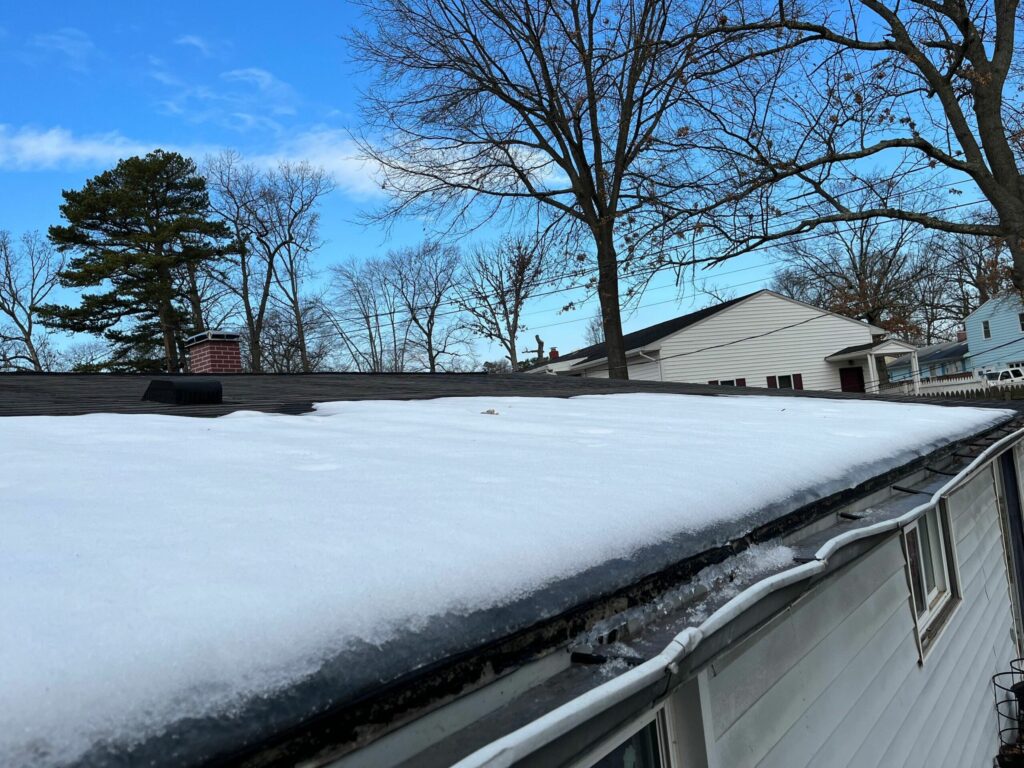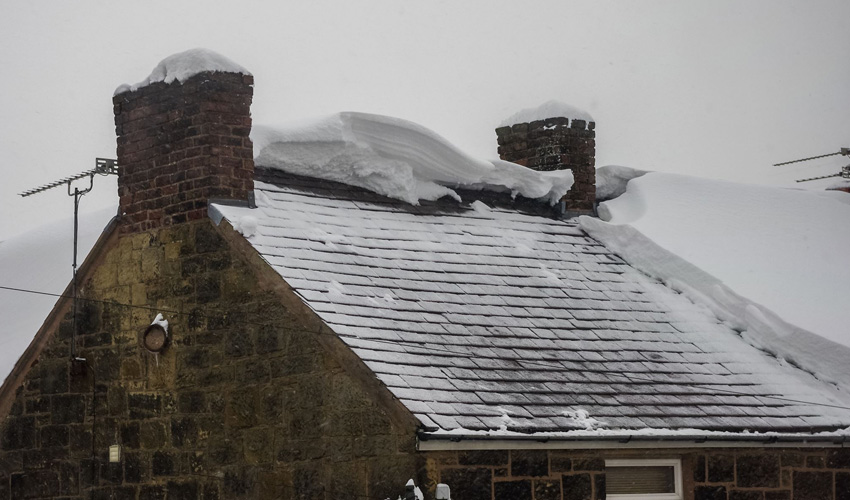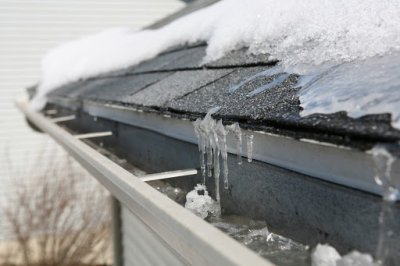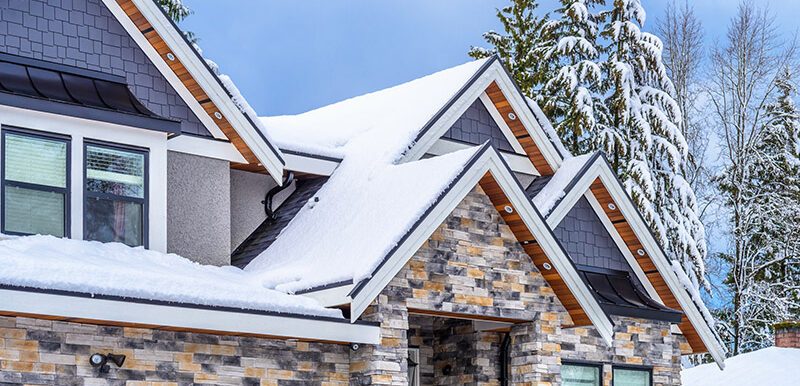During the winter months, many homeowners may find themselves questioning whether it is the right time to reroof their homes. The freezing temperatures, potential snowfall, and harsh outdoor conditions may make the task seem daunting. However, before you dismiss the idea completely, it’s essential to consider the benefits and drawbacks of reroofing in winter. This article will explore the key factors to help you make an informed decision about whether tackling a roofing project during the colder season is a feasible option for you.
Factors to Consider
Temperature
When considering whether to reroof in winter, temperature is an important factor to take into account. Winter temperatures can vary greatly depending on your location. In some regions, extreme cold temperatures can make the roofing process more challenging and can affect the performance of certain roofing materials. However, in milder winter climates, the temperature may be suitable for reroofing without significant difficulties.
Weather
The weather conditions during the winter months should also be considered before deciding to reroof. Snow, rain, and strong winds can all impact the progress and quality of a roofing project. It is crucial to choose a time when the weather forecast predicts a period of relative calm and dryness. This will minimize the risk of weather-related delays or damage to the roofing materials.
Availability of Contractors
Finding an available and experienced contractor during the winter months can sometimes be more challenging than in other seasons. Many roofing companies have busy schedules during the warmer months, which can result in longer wait times for their services. However, during the winter, there may be a decrease in demand for roofing projects, allowing for more flexibility in scheduling and a potentially quicker turnaround time.
Advantages of Reroofing in Winter
Lower Costs
One significant advantage of reroofing in winter is the potential for lower costs. Since there is typically less demand for roofing services during this season, some contractors may offer discounts or more competitive pricing to attract customers. Additionally, suppliers may have offseason sales, leading to cost savings on materials.
Flexible Scheduling
As mentioned earlier, the availability of contractors tends to be more flexible during the winter months. With lesser demand, you may have a better chance of securing your preferred roofing contractor and scheduling your project at a time that works best for you. This flexibility can be especially advantageous if you have specific time constraints or prefer to have the work completed during a quieter period.
Shorter Project Duration
During winter, the roofing process can often be completed more quickly than in warmer months. With fewer projects in progress and fewer interruptions due to weather, contractors may be able to dedicate more resources and work efficiently to complete your reroofing project in a shorter timeframe. The shorter project duration means less inconvenience for you and your household.
Less Competition for Contractors
Since the demand for roofing services tends to be lower in winter, there is generally less competition for contractors. This can work in your favor by allowing greater flexibility in negotiations, more personalized attention from the contractor, and potentially even better quality workmanship. Hiring a contractor when they are less busy can lead to a smoother and more satisfying experience overall.

Disadvantages of Reroofing in Winter
Cold Temperatures
One of the primary disadvantages of reroofing in winter is the cold temperatures. Cold weather can make it more challenging for contractors to work efficiently and can also affect the performance of certain roofing materials. For example, cold temperatures can cause some materials to become brittle, making installation more difficult and potentially leading to a lower-quality end result.
Challenges with Materials
Certain roofing materials may pose challenges when used in winter conditions. For instance, installing shingles may be more difficult due to the lower temperatures, which can cause them to lose flexibility and become more prone to cracking. It is essential to choose materials that are suitable for colder climates and have been tested to perform well in low temperatures.
Limited Daylight Hours
During winter, daylight hours are shorter, which can impact the progress of your roofing project. Contractors may have to work within a narrower window of daylight, potentially extending the duration of the project. It is important to discuss scheduling with your contractor to ensure they can make the most of the available daylight and properly plan their work accordingly.
Potential Ice Buildup
Ice buildup can be a significant concern during winter reroofing projects. When it snows or rains, the moisture can freeze and create ice dams or icicles on the roof, which can cause a range of problems, including water leaks and damage to the roofing structure. It is crucial to have measures in place to prevent ice buildup, such as proper attic ventilation and the removal of snow and ice before commencing the reroofing process.
Preparation and Safety Measures
Inspection and Assessment
Before beginning any reroofing project, it is important to conduct a thorough inspection and assessment of your current roof. This will help identify any existing damage or areas that need repair. During winter, it becomes even more critical to detect and address any potential issues that could worsen in the colder months. Hire a professional roofing contractor to perform a comprehensive inspection and provide you with an assessment report.
Removing Snow and Ice
To ensure a successful winter reroofing project, it is crucial to remove any snow and ice present on the roof. This will prevent issues such as ice dams and provide a clean and stable surface for installation. Hiring professionals who are experienced in snow and ice removal will help ensure the task is done safely and effectively, without causing any damage to the roof or surrounding areas.
Proper Attic Ventilation
Attic ventilation plays a crucial role in preventing ice buildup and maintaining a stable indoor environment during winter. Proper ventilation allows for the circulation of air and helps regulate temperature and moisture levels, reducing the risk of ice dams and condensation issues. Consult with your roofing contractor to ensure your attic ventilation is adequate and functioning correctly before starting the reroofing project.
Safety Equipment and Procedures
Winter roofing projects pose additional safety challenges due to cold temperatures, potentially slippery surfaces, and limited daylight hours. It is essential for both the roofing contractor and any other workers on-site to have appropriate safety equipment, including harnesses, non-slip footwear, and protective gear for cold weather conditions. Additionally, establish and follow safety procedures, such as regular communication among the team and adherence to OSHA guidelines, to minimize any potential risks.

Choosing the Right Material
Considerations for Cold Climates
When reroofing in winter, it is vital to select roofing materials that are suitable for colder climates. Some materials perform better in low temperatures and are less susceptible to cracking or damage caused by the cold. For example, metal roofing is known for its durability and strength in adverse weather conditions, making it a popular choice for winter reroofing projects. Discuss your options with your contractor, considering the specific climate of your region.
Impact of Temperature on Materials
Different roofing materials have varying reactions to temperature fluctuations. For instance, asphalt shingles can become more brittle in cold temperatures, potentially leading to cracking and shortened lifespan. However, some materials, such as synthetic slate or polymer-based products, may offer improved performance and durability in low temperatures. Consider the impact of temperature on the chosen material and consult with your contractor to select the most appropriate option.
Winter-Friendly Roofing Options
Several roofing options are particularly well-suited for winter conditions. Metal roofing, as previously mentioned, is known for its durability and resistance to damage from snow and ice. Additionally, rubber or synthetic roofing materials often have enhanced flexibility and resistance to cold temperatures. These winter-friendly options can help ensure the longevity and performance of your roof throughout the winter months and beyond.
Hiring a Professional Contractor
Experience with Winter Roofing
When selecting a roofing contractor, it is crucial to choose one with experience in winter roofing projects. Contractors who have successfully completed reroofing jobs during the winter months will be familiar with the unique challenges that arise and will have strategies in place to overcome them. Ask potential contractors about their experience with winter projects and request examples of similar jobs they have completed.
References and Reviews
To gauge the quality and reliability of a roofing contractor, ask for references from previous clients who had their roofs reroofed during winter. Contact these references and inquire about their overall satisfaction, the contractor’s professionalism, and any specific issues or concerns they encountered. Additionally, read online reviews and ratings to gather further insights into the contractor’s reputation and track record.
Insurance and Licensing
Before hiring a roofing contractor, ensure they have the necessary insurance coverage and proper licensing required by your local authorities. This will protect both you and the contractor in the event of any accidents or damages that may occur during the reroofing process. Request proof of insurance and verify the contractor’s licensing information to ensure you are working with a legitimate and responsible professional.
Written Contract and Warranty
A written contract is essential when undertaking any roofing project, including winter reroofing. The contract should clearly outline the scope of work, project timeline, materials to be used, payment terms, and any warranties or guarantees offered by the contractor or manufacturer. Review the contract thoroughly before signing and ask for clarification on any unclear terms or provisions. A well-written contract will protect both parties and provide a reference point in case of any disputes or issues.

Proper Project Planning
Scheduling and Timeline
Effective project planning is essential to ensure a successful winter reroofing project. Work closely with your contractor to establish a realistic schedule and timeline for the project. Take into account the weather forecast and allow for additional time if any weather-related delays occur. By coordinating with the contractor and considering potential setbacks, you can minimize disruptions and ensure the project runs smoothly.
Coordination with Other Contractors
If your reroofing project involves other simultaneous construction or renovation work, it is crucial to coordinate with all involved contractors. This coordination ensures that the timing of each project aligns and prevents any conflicts or overlapping work. Advance communication and collaboration among contractors will contribute to a seamless overall renovation experience.
Permits and Regulations
Before commencing any construction work, particularly reroofing projects, it is important to obtain any necessary permits and ensure compliance with local regulations. Check with your local building department to determine the specific requirements and obtain the required permits accordingly. Failure to comply with regulations can result in costly fines and potential issues during the project.
Tips for Successful Winter Reroofing
Monitor Weather Forecasts
Regularly monitor weather forecasts leading up to and during your winter reroofing project. Stay informed about any changes or potential disruptions due to inclement weather. Open lines of communication with your contractor and discuss contingency plans in case of adverse weather conditions. By staying proactive and flexible, you can mitigate potential delays and complications.
Maintain Communication with Contractor
Clear and consistent communication with your roofing contractor is crucial throughout the reroofing process. Regularly touch base with your contractor to discuss progress, any issues that arise, and any questions or concerns you may have. Effective communication will help address any potential misunderstandings and ensure everyone remains on the same page throughout the project.
Protect Landscaping and Property
Winter reroofing projects can put your landscaping and surrounding property at risk of being damaged or affected. To minimize potential harm, discuss protective measures with your contractor before the project begins. This may include covering plants, removing valuable items from the vicinity of the construction area, and using protective materials and equipment to prevent any damage.

Post-Reroofing Maintenance
Regular Inspections
After completing a winter reroofing project, it is crucial to conduct regular inspections to ensure the ongoing integrity and performance of your roof. Hire a professional to inspect your roof periodically and identify any potential issues early on. By addressing these issues promptly, you can prevent more significant problems from arising and extend the lifespan of your newly reroofed structure.
Addressing Potential Issues
During the post-reroofing inspections, if any issues or concerns are identified, it is important to address them promptly. Contact your roofing contractor and discuss the problems you have noticed. Prompt and effective resolution will help maintain the quality and durability of your roof, ensuring it remains in optimal condition throughout its lifespan.
Gutter and Drainage Maintenance
Proper maintenance of gutters and drainage systems is crucial, particularly in winter. Clear any debris, such as leaves or branches, from your gutters and ensure downspouts are free of blockage. This will prevent ice dams from forming and allow for proper drainage. Regularly inspect and clean the gutters to avoid water buildup, which can cause damage to both the roofing system and the foundation of your home.
Conclusion
In conclusion, deciding whether to reroof in winter requires careful consideration of various factors. While there are both advantages and disadvantages to winter reroofing, by preparing adequately, choosing the right materials and contractor, and implementing proper project planning and safety measures, you can successfully complete your reroofing project during the winter months. Evaluate the pros and cons outlined in this article, consult with professionals, and make an informed decision that best suits your specific circumstances and goals.
